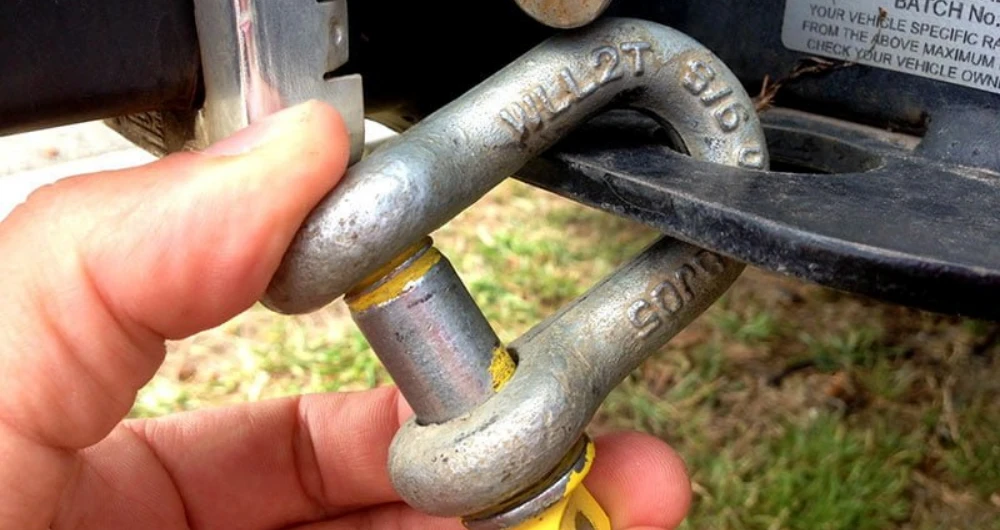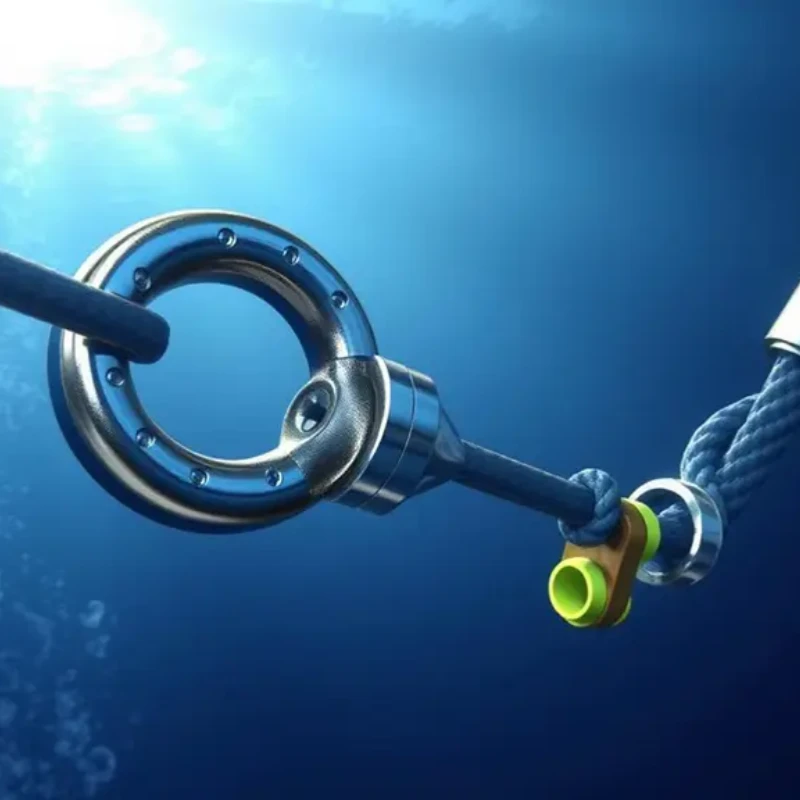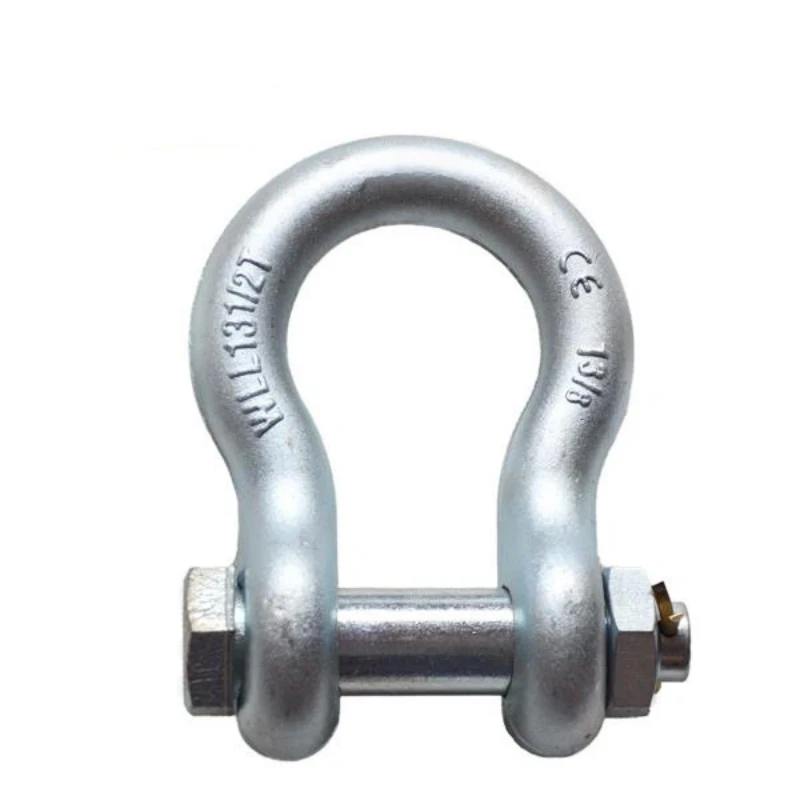When you use D-ring shackles, you must follow key steps for safety and efficiency. Select the right shackle for your load. Inspect the hardware for damage or corrosion.
Attach the load with proper alignment. Secure the pin tightly. Perform safety checks before lifting or towing. Rely on certified products from Powerful Machinery to maximize D shackle usage and safety in every application.
Key Takeaways
Always inspect D-ring shackles for damage before use. Look for cracks, corrosion, and clear markings to ensure safety.
Select the right size and material of shackle based on your load requirements and environment. Stainless steel is best for marine settings.
Secure the pin tightly using methods like wire or threadlock to prevent accidental loosening during lifting or towing.
Align the shackle properly to avoid side loading. This maximizes strength and prevents premature wear or failure.
Use certified shackles from trusted brands like Powerful Machinery to ensure reliability and compliance with safety standards.
What Are D Ring Shackles?

Structure and Function
D-ring shackles serve as essential connectors in lifting, towing, and rigging operations. You will recognize them by their distinctive D-shaped body and secure pin closure. This shape allows you to align the shackle with chains, ropes, or straps for straight-line pulls.
The straight design and thin body give you a strong, stable connection that resists twisting and side-loading. Most D-ring shackles use high-quality steel or stainless steel, which helps them withstand heavy loads and harsh environments.
Key structural features include:
A D-shaped body for straight-line strength
A removable pin or bolt for easy attachment and detachment
Construction from durable metals like steel or stainless steel
You can find D-ring shackles in a range of sizes. Each size supports a specific load capacity, from a few hundred pounds to several thousand pounds. This variety lets you choose the right shackle for your job, whether you work in construction, marine, or industrial settings.
Tip: Always select certified shackles from trusted brands like Powerful Machinery. Their products meet strict safety standards and deliver reliable performance in demanding applications.
Common Uses
You will use D-ring shackles in many industries because of their versatility and strength. Here are some of the most common applications:
Lifting heavy objects with cranes or hoists
Securing loads by connecting wires, straps, or ropes
Towing vehicles or equipment during transport
Supporting personal protective equipment (PPE) in elevated work environments
D-ring shackles also play a key role in safety. For example, OSHA guidelines require D-rings on PPE to protect workers at height. You can rely on Powerful Machinery’s certified shackles for these critical tasks.
Their products offer corrosion resistance, high load ratings, and easy handling, making them a top choice for professionals worldwide.
Choosing the Right Shackle

Material and Size
Selecting the right D-ring shackle starts with understanding your material and size requirements. You must match the shackle’s material to the environment where you plan to use it. For marine or corrosive settings, stainless steel shackles work best.
Their chromium oxide film provides outstanding resistance to rust and chemicals, making them ideal for saltwater, chemical plants, or outdoor use. Galvanized shackles offer some protection against corrosion, but they do not perform as well as stainless steel in extreme conditions.
Stainless Steel Shackles: High corrosion resistance, perfect for marine and chemical environments.
Galvanized Shackles: Basic rust protection, suitable for less aggressive environments.
Size matters just as much as material. Always check the Working Load Limit (WLL) stamped on the shackle. The WLL tells you the maximum load the shackle can safely handle.
For heavy-duty jobs like offshore rigging or steel fabrication, choose shackles with higher WLLs. Lighter tasks require shackles with lower ratings. Using the correct size prevents accidents and equipment failure.
Tip: Powerful Machinery offers Stainless Steel Screw Pin D Shackles in a wide range of sizes, supporting loads from 50kg to 5000kg. You can find the right fit for any application.
Application Fit
You need to consider the specific job and environment before making your final choice. Environmental factors such as seawater, sand, and high tensile forces can increase wear on shackles.
Shackles made from harder, wear-resistant materials last longer in harsh conditions. Softer materials wear out faster, especially under heavy loads.
Certifications also play a critical role in your selection process. Look for shackles that meet recognized safety and quality standards:
CE: Compliance with European safety standards
ISO: Adherence to international quality standards
ASME: Conformity to American engineering standards
Powerful Machinery’s Stainless Steel Shackles and Screw Pin D Shackles meet these certifications. Their robust construction and easy-to-use screw pin design ensure safety and reliability, even in the toughest environments. By choosing certified, high-quality shackles, you protect your team and your equipment.
How to Use D Ring Shackles?
Inspection Before Use
You must inspect every D-ring shackle before you use it. This step is critical for D shackle usage and safety. Follow these steps to ensure your equipment is ready for service:
Check the shackle for any reduction in physical size. Even a small loss in material can lower the load capacity.
Look for excessive pitting, corrosion, nicks, or gouges on the body and pin.
Examine the shackle for any bending, twisting, stretching, elongation, cracks, or broken parts.
Inspect for signs of heat damage, such as discoloration or weld spatter.
Make sure the manufacturer’s name, working load limit, and size markings are clear and readable.
Inspect the load pin for bending or damaged threads.
Note: If you find missing or illegible markings, damage to the original shape, excessive corrosion, or heat damage, remove the shackle from service immediately. These are common inspection failures that can compromise D shackle usage and safety.
Powerful Machinery’s D-ring shackles feature robust construction and clear markings, making inspections straightforward and reliable.
Attaching and Aligning
Proper attachment and alignment are essential for safe operation. When you attach a D-ring shackle, always:
Align the shackle for straight-line tension across the pin’s centerline.
Avoid side loading, which can significantly reduce the shackle’s capacity.
Prevent twisting or torsional forces on the bow of the shackle.
Ensure the load is distributed evenly to maximize strength and prevent premature wear or failure.
Tip: Powerful Machinery’s user-friendly design, including quick-release pins and a variety of sizes, helps you achieve correct alignment and secure connections with ease.
You should always double-check the alignment before applying any load. This step reduces the risk of accidents and extends the life of your equipment.
Securing the Pin
Securing the pin is the final step before you begin lifting or towing. A loose pin can lead to dangerous failures. You have several options to keep the pin in place:
Mouse the pin with an iron wire by threading the wire through the pin’s collar and wrapping it around the shackle. This method provides a secure hold and prevents accidental loosening.
Use threadlock to glue the pin in place. This option allows for future disassembly with standard tools.
Employ electrical cable ties for a quick solution, but remember these may degrade under sunlight.
Choose Monel wire for the best durability and resistance to environmental factors.
Powerful Machinery’s D-ring shackles feature screw pin designs that make securing the pin fast and simple. The high-strength materials and precise threads ensure the pin stays tight during operation.
Reminder: Always verify the pin is fully engaged and secured before use. Never rely on hand-tightening alone for critical lifts or tows.
By following these steps, you ensure every D-ring shackle performs safely and reliably. Powerful Machinery’s certified products, with their high strength, corrosion resistance, and user-friendly features, support you in every application.
D Shackle Usage and Safety

Best Practices
You must follow strict best practices to ensure D shackle usage and safety in every lifting or towing operation. These steps protect you, your team, and your equipment from unnecessary risks.
Inspect the shackle pin and body for cracks, deformation, or excessive wear before each use.
Avoid sudden movements, such as quick starts or stops, which can cause shock loading and damage the shackle.
Consult the manufacturer if you plan to use shackles in caustic or acidic environments. Chemicals can weaken the metal.
Remove any shackle from service immediately if you find damage or if the rated capacity is not visible.
Always connect multiple sling legs to the shackle’s body, not the pin, to prevent bending or failure.
Use shackles that match or exceed the diameter of the wire rope or synthetic sling. This prevents pinching or binding.
Make sure the shackle pin is fully engaged and properly tightened before applying any load.
Never exceed the working load limit marked on the shackle.
Store shackles in a clean, dry place to prevent corrosion and prolong their lifespan.
Tip: Always use certified shackles from Powerful Machinery. Their products meet international safety standards and provide reliable performance in demanding environments.
Common Mistakes
Many accidents happen because of avoidable mistakes. You can prevent injuries and equipment failure by recognizing and avoiding these errors:
Using shackles with the wrong size or improperly rated pins can cause catastrophic failure.
Attempting to repair or modify shackles by welding weakens the metal and voids certifications.
Continuing to use shackles that show cracks, deformations, nicks, or gouges puts everyone at risk.
Loading a shackle beyond its rated capacity can lead to breakage and severe injury.
Allowing the pin to come loose or using a substitute pin increases the chance of accidental release.
Ignoring proper alignment and side loading reduces the shackle’s strength and may cause it to bend or break.
Failing to use winch blankets or other safety measures during recovery operations exposes you and others to flying debris if a shackle fails.
Note: Never use shackles that are bent, stretched, broken, or have been chopped in half. Remove any damaged or questionable hardware from service right away.
You should always prioritize D shackle usage and safety by following these guidelines. Certified products from Powerful Machinery give you peace of mind. Their robust construction, clear markings, and strict quality control help you avoid common mistakes and maintain a safe work environment.
Inspection and Maintenance
Routine Checks
You must inspect D-ring shackles regularly to maintain safety and performance. Routine checks help you identify wear, damage, or other issues before they become serious problems. Use the following table to guide your inspection schedule:
Type of Inspection | Frequency/Details |
|---|---|
Initial Inspection | Conduct this when you purchase new shackles or after any alterations or repairs. |
Before Use Inspection | Perform a visual check before each use. Replace shackles if you find distortions. |
Periodic Inventory Inspection | Complete an annual check. Consider usage frequency, environmental conditions, and load nature. |
During each inspection, look for cracks, deformation, corrosion, or missing markings. Powerful Machinery’s certified shackles feature clear load markings and robust construction, making inspections straightforward.
Our products also undergo advanced testing, such as Magnetic Particle Inspection and Dye Penetrant Inspection, to detect hidden flaws. These features give you peace of mind in critical applications.
Cleaning and Storage
Proper cleaning and storage extend the lifespan of your shackles and support D shackle usage and safety. Follow these best practices:
Clean and dry shackles after each use to prevent rust and damage.
Store shackles in a designated area, coiled or folded, to avoid tangles.
Keep shackles away from direct sunlight to protect them from UV damage.
Inspect shackles regularly for wear or damage and replace them if necessary.
Powerful Machinery’s stainless steel shackles resist corrosion and require minimal maintenance. Their high toughness and fatigue resistance ensure reliable performance, even after repeated use. You protect your investment and maintain safety by following these cleaning and storage guidelines.
Tip: Always use certified shackles from Powerful Machinery for long-term reliability in demanding environments.
Conclusion
You can ensure safe and effective use of D-ring shackles by following these essential steps:
Step | Description |
|---|---|
1 | Inspect shackles for damage and remove any that are compromised. |
2 | Select the appropriate type of shackle for your lift. |
3 | Secure the pin properly. |
4 | Center the load to avoid side loading. |
5 | Make proper connections with slings and hardware. |
6 | Calculate tension based on sling angles. |
7 | Use only the original pin. |
8 | Avoid extreme temperatures and chemicals. |
9 | Respect the Working Load Limit (WLL). |
Always use gear that matches or exceeds your load rating.
Inspect your equipment regularly.
Invest in certified, high-quality shackles from reputable brands like Powerful Machinery for reliability and safety.
Choosing certified shackles gives you confidence in demanding environments. For expert advice or custom solutions, reach out to the Powerful Machinery team.
FAQ
How do you choose the correct size D-ring shackle?
You should match the shackle size to your load requirements and the diameter of your rope or chain. Always check the Working Load Limit (WLL) stamped on the shackle. When in doubt, consult Powerful Machinery’s team for expert guidance.
Can you use D-ring shackles in marine environments?
Yes. You can use stainless steel D-ring shackles in marine environments. Their corrosion resistance makes them ideal for saltwater and harsh outdoor conditions. Powerful Machinery’s AISI316 stainless steel shackles provide excellent durability for these applications.
How often should you inspect your D-ring shackles?
You should inspect shackles before every use and perform a thorough inspection at least once a year. Look for cracks, corrosion, or deformation. Remove any damaged shackles from service immediately.
What is the best way to secure the pin on a D-ring shackle?
You should fully tighten the screw pin by hand, then secure it with wire or threadlock for critical lifts. Never substitute the original pin. Powerful Machinery’s screw pin design ensures easy and reliable pin security.


